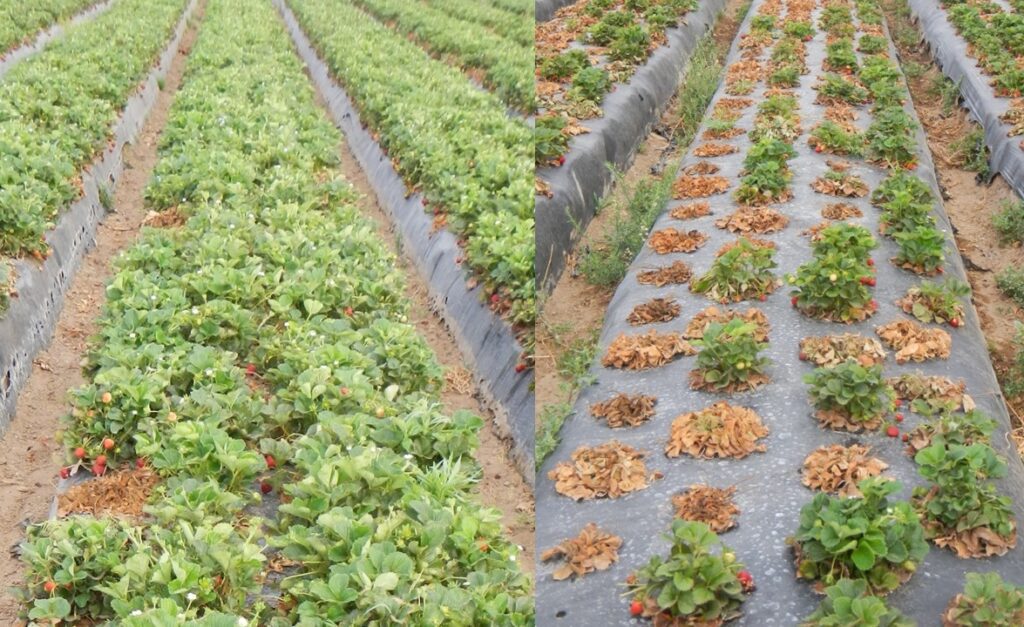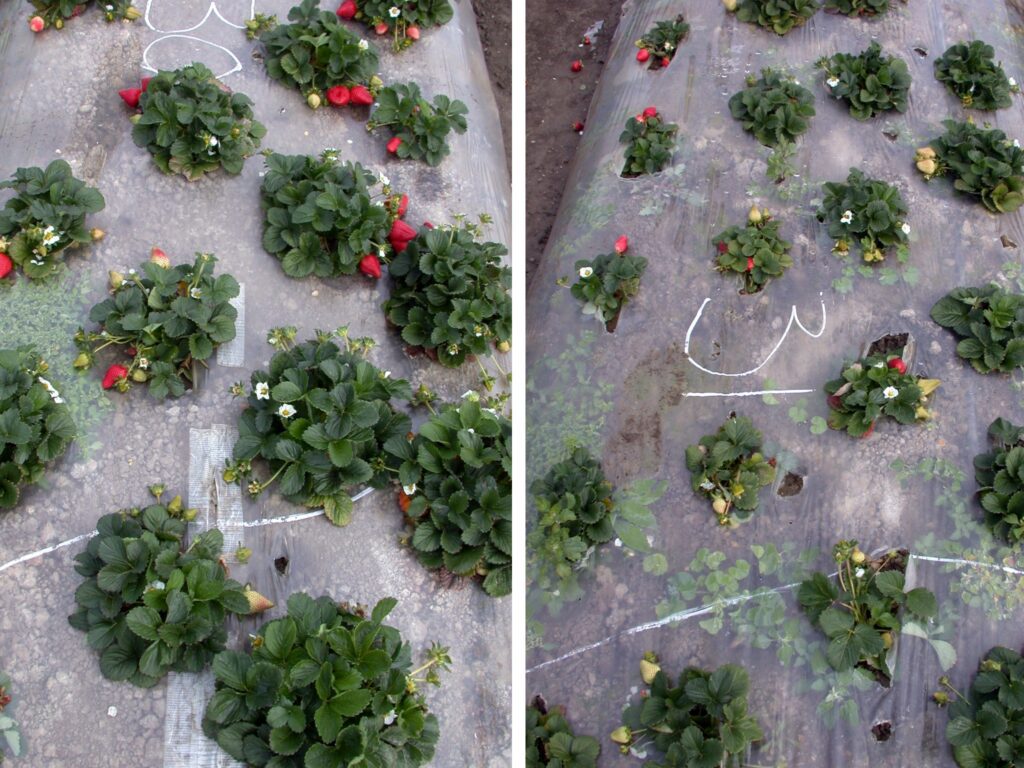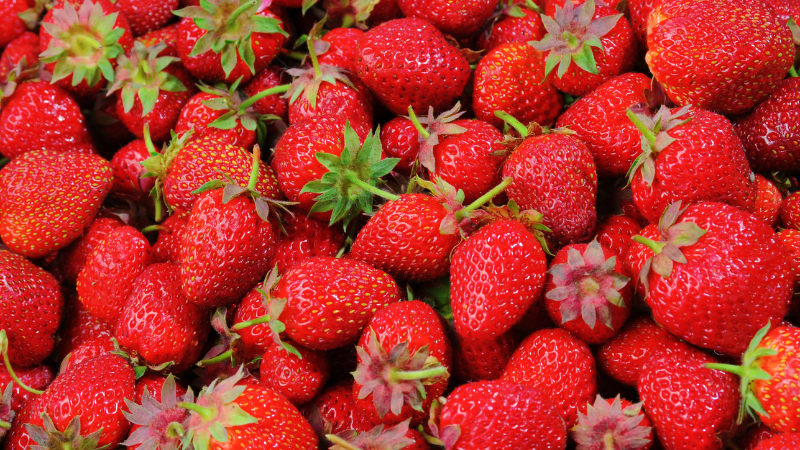Mar 29, 2024UCCE research boosts organic strawberry yields
Troubled by puny plants, low yields and persistent mite problems, third-generation Southern California strawberry grower Glen Hasegawa was ready to give up on his transition from conventional to organic 12 years ago.
“I’ve always liked a challenge – but it turned out to be more of a challenge than I thought it would be!” he said.
But then, with the help of scientists including Oleg Daugovish, UC Cooperative Extension strawberry and vegetable crop advisor in Ventura County, Hasegawa tried a technique called anaerobic soil disinfestation (ASD). When applied correctly, the multi-step ASD process creates a soil environment that suppresses pathogens and weeds and makes for healthier, more robust crop growth.


“Back in the day, it was really hard to get the plant growing vigorously in organic,” said Hasegawa, owner of Faria Farms in Oxnard. “So we started using the ASD and then you could definitely see that the plant had more vigor and you could grow a bigger, better plant using it.”
Seeing that he could produce yields “in the neighborhood” of those grown in conventional strawberry fields fumigated with synthetic fumigants, Hasegawa was able to expand his original 10 acres of organic strawberries to 50 acres.
“I guess you could say I’m kind of a convert,” he said, noting that he now applies ASD to all his acreage each year in late spring.
Joji Muramoto, UC Cooperative Extension specialist in organic production based at UC Santa Cruz, has been experimenting with ASD since it was first brought to the U.S. from the Netherlands and Japan in the early 2000s. Carol Shennan, a professor in the Department of Environmental Studies at UCSC, and Muramoto were among the first to try the technique in California. They found that ASD successfully controlled an outbreak of Verticillium wilt – caused by the pathogen Verticillium dahliae – at UCSC’s small organic farm in 2002.
Since then, Shennan, Muramoto, Daugovish and their colleagues have seen encouraging results at 10 trial sites across the state.
“We demonstrated that ASD can provide comparable yields with fumigants, in side-by-side replicated trials,” Muramoto said.


ASD comprises three basic steps: incorporating a carbon source that is easily digestible by microbes in the soil (traditionally, rice bran has been used), further encouraging fermentation by covering the soil with plastic to limit oxygen supply, and finally adding water through drip irrigation to initiate the “anaerobic” decomposition of the carbon source and maintain the three-week “cooking” process.
The resulting cascade of chemical, microbiological and physical changes to the soil creates an ecosystem that is both conducive to strawberry growth – and inhospitable to pathogens and weeds.
“It’s not like a pesticide where you have a mode of action, and thus resulting in ‘A’ and ‘B’ for you,” Daugovish explained. “There’s a sort of cocktail of events that happens in the soil; they all happen interconnectedly.”
Compared to similar fields that did not undergo the process, ASD-applied organic strawberry fields across California have seen yields increase by 60% to 70% – and even doubling in some cases, according to Daugovish.
The UCCE advisor also shared the story of a longtime grower in Ventura County, who came to him with fields in “miserable” condition; they were plagued by one of the world’s worst weeds, yellow nutsedge, and infected with charcoal rot, a disease caused by the fungus Macrophomina phaseolina. But after applying rice bran and following the ASD recipe, the grower saw phenomenal results.
“The only complaint he said to me was, ‘Now I have too many berries – we have to have more pickers to pick the berries!’” Daugovish recalled.
Via researchers’ meetings, online resources, on-farm demonstration trials, and word of mouth from peers, use of ASD by California strawberry growers has grown significantly during the past two decades. Tracking the purchase of rice bran, Muramoto estimated that about 2,500 acres were treated by the ASD-related practices in 2023 – covering roughly half of the 5,200 total acres of organic strawberries in California.
Read the complete article here.















